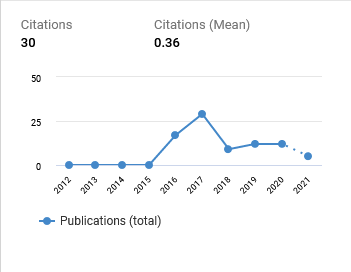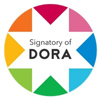The Contributions of Competitions to Cities and Urban Design
n Merzifon Municipality’s Business and Life Center Architectural Project Competition
DOI:
https://doi.org/10.29080/eija.v7i1.1212Keywords:
Urban design, urban dsign objectives, urban built environment, competitionsAbstract
Competitions are a significant means of focusing on specific spaces in cities and forming public opinion. Competitions result in many professionals such as architectures, urban planners, urban designers, landscape architects, civil engineers, etc. proposing lots of designs for the same space, and thereby submitting various solution offers for it. Therefore, competitions are important not only for their results, but also for increasing knowledge about the occupational groups of design and the shaping of urban open spaces and built environments, in other words, cities. This study analyzes competitions’ contributions to urban design based on the experience of Merzifon Municipality’s Business and Life Center Architectural Project Competition. The discipline of urban design, which plays an important role in forming the urban open spaces and built environments, is enriched by competitions. The approaches developed in the projects that compete for the urban spaces focused on the competitions play an important role in shaping cities.
Downloads
References
Adamczyk, G. (2004). Architectural competitions and new reflexive practices. https://www.ccc.umontreal.ca/PDF/2004_ADAMCZYK_architectural.PDF
Alexander, E. R., & Witzling, L. P. (1990). Planning and urban design competitions: Introduction and overview. Journal of Architectural and Planning Research, 7(2), 91–104.
Bell, W. (2005). Progressing Process in Urban Design. Urban Policy and Research, 23(3), 371–376. https://doi.org/10.1080/08111470500218791
Bern, A. (2018). Architecture competitions in an urban planning context. Journal of Urban Design, 23(2), 239–256. https://doi.org/10.1080/13574809.2017.1336421
CABE. (2000). Urban design in the planning system: Towards better practice by design. Department of the Environment, Transport and the Regions. https://www.academia.edu/30960485/Urban_design_in_the_planning_system_towards_better_practice_by_design
Carmona, M. (2014). The Place-shaping Continuum: A Theory of Urban Design Process. Journal of Urban Design, 19(1), 2–36. https://doi.org/10.1080/13574809.2013.854695
Carmona, M., Carmona, R., Heath, T., Oc, T., & Tiesdell, S. (2003). Public Places, Urban Spaces: The Dimensions of Urban Design. Architectural Press.
Davison, G., Freestone, R., Hu, R., & Baker, S. (2018). The impacts of mandatory design competitions on urban design quality in Sydney, Australia. Journal of Urban Design, 23(2), 257–277. https://doi.org/10.1080/13574809.2017.1337497
Dubbeling, M., Goethals, S., & Stephens, R. (2013). Urban Planning and Design Competitions. Oregon Planners’ Journal, winter, 14-16.
Dufrenne, M. (2011). Phénoménologie de l’expérience esthétique (PUF edition). PUF.
Eley, J. (1990). Urban Design Competitions: A British Perspective. Journal of Architectural and Planning Research, 7(2), 132–141.
Ellis, C. (2014). Process and Principles in Urban Design. Journal of Urban Design, 19(1), 47–48. https://doi.org/10.1080/13574809.2014.854680
Erten, S. (2016). Analysis of an urban design competition: The case of Edirne/Selimiye and the discussion of “vehicular road in a historic core”. Journal of Planning. https://doi.org/10.5505/planlama.2016.53824
Garde, A. (2014). Citizen Participation, Design Competition and the Product in Urban Design: Insights from the Orange County Great Park. Journal of Urban Design, 19(1), 89–118. https://doi.org/10.1080/13574809.2013.854697
Hawkes, D. L. (1999). An exploration into aesthetic control practice, implementation and problems in Battery Point [Unpublished Thesis]. University of Tasmania. Australia.
Larson, M. S. (1994). Architectural competitions as discursive events. Theory and Society, 23(4), 469–504. https://doi.org/10.1007/BF00992825
Lehrer, U. (2011). Urban Design Competitions. In T. Banerjee & A. Loukaitou-Sideris, Companion to Urban Design (pp. 304–316).
Liang, Z. (2016). Rethinking Design Competitions to Promote Urban Development—A Comparative Analysis—A case study of contemporary international design competitions in Finland and China (Publication series doctoral dissertations). Aalto University. https://aaltodoc.aalto.fi:443/handle/123456789/23476
Lipstadt, H. (1989). The Experimental Tradition. In H. Lipstadt, The Experimental Tradition: Essays on Competitions in Architecture (pp. 9–19). Princeton Architectural Press.
Lipstadt, H. (2013). Experimenting with The Experimental Tradition, 1989-2009: On Competitions and Architecture Research. NA, 21(2–3), Article 2–3. http://arkitekturforskning.net/na/article/view/84
Malmberg, C. (2006). Introduction. In C. Malmberg (Ed.), The Politics of Design: Competitions for Public Projects (pp. 29–52). olicy Research Institute for the Region. https://www8.gsb.columbia.edu/researcharchive/articles/3586
Mikelsone, I. (2016). Architectural competitions as an instrument for heritage protection: The dynamics of competition taxonomy. Journal of Architecture and Urbanism, 40(4), 272–282. https://doi.org/10.3846/20297955.2016.1246985
Nasar, J. L. (1999). Design by Competition: Making Design Competition Work. Cambridge University Press.
Ollswang, J. E. (1990). Successful Competitions: Planning for Quality, Equity and Useful Results. Journal of Architectural and Planning Research, 7(2), 105–113.
Pantel, G. (1994). Design Control in German Planning. Built Environment (1978-), 20(2), 104–112.
Punter, J. (2005). Urban design in central Sydney 1945–2002: Laissez-Faire and discretionary traditions in the accidental city. Progress in Planning, 63(1), 11–160. https://doi.org/10.1016/j.progress.2004.06.007
Radford, A. (2010). Urban design, ethics and responsive cohesion. Building Research & Information, 38(4), 379–389. https://doi.org/10.1080/09613218.2010.481437
RIBA. (2012). Royal Institute of British Architects Competitions Guidance for Clients. Royal Institute of British Architects. https://www.ribacompetitions.com/guides/RIBA_Competitions_Client_Guide_booklet.pdf
Sagalyn, L. (2006). The Political Fabric of Design Competitions | Columbia Business School Research Archive. In C. Malmberg (Ed.), The Politics of Design: Competitions for Public Projects (pp. 29–52). olicy Research Institute for the Region. https://www8.gsb.columbia.edu/researcharchive/articles/3586
Spreiregen, P. D. (1979). Design Competitions. McGraw-Hill.
Sternberg, E. (2000). An Integrative Theory of Urban Design. Journal of the American Planning Association, 66(3), 265–278. https://doi.org/10.1080/01944360008976106
Topçu, kadriye. (2011). Alışveriş alanlarının mekânsal kalite açısından değerlendirilmesi: Karşılaştırmalı bir analiz [Doctoral Thesis, Selcuk university]. https://9lib.net/document/eqog8p7z-alisveris-alanlarinin-mekansal-kalite-acisindan-degerlendirilmesi-karsilastirmali-analiz.html
Topcu, K. D., & Topcu, M. (2012). Visual Presentation of Mental Images in Urban Design Education:Cognitive Maps. Procedia - Social and Behavioral Sciences, 51, 573–582. https://doi.org/10.1016/j.sbspro.2012.08.208
White, J. T. (2014a). Design by Competition and the Potential for Public Participation: Assessing an Urban Design Competition on Toronto’s Waterfront. Journal of Urban Design, 19(4), 541–564. https://doi.org/10.1080/13574809.2014.923744
White, J. T. (2014b). Extending Dialogue in a Design Competition? 5th International Conference on Competitions, 32. http://citeseerx.ist.psu.edu/viewdoc/download?doi=10.1.1.947.9817&rep=rep1&type=pdf
Zhang, X., Zhu, Q., & Wang, J. (2004). 3D City Models Based Spatial Analysis to Urban Design. Geographic Information Sciences, 10(1), 82–86. https://doi.org/10.1080/10824000409480658

Downloads
Published
How to Cite
Issue
Section
Categories
License
Copyright (c) 2021 Baris Ergen

This work is licensed under a Creative Commons Attribution-ShareAlike 4.0 International License.
- Authors retain copyright and grant the journal right of first publication with the work simultaneously licensed under a Creative Commons Attribution ShareAlike License that allows others to share the work with an acknowledgment of the work's authorship and initial publication in this journal.
- Authors are able to enter into separate, additional contractual arrangements for the non-exclusive distribution of the journal's published version of the work (e.g., post it to an institutional repository or publish it in a book), with an acknowledgment of its initial publication in this journal.
- Authors are permitted and encouraged to post their work online (e.g., in institutional repositories, pre-print sites, or on their website) prior to and during the submission process, as it can lead to productive exchanges, as well as earlier and greater dissemination of published work.
































